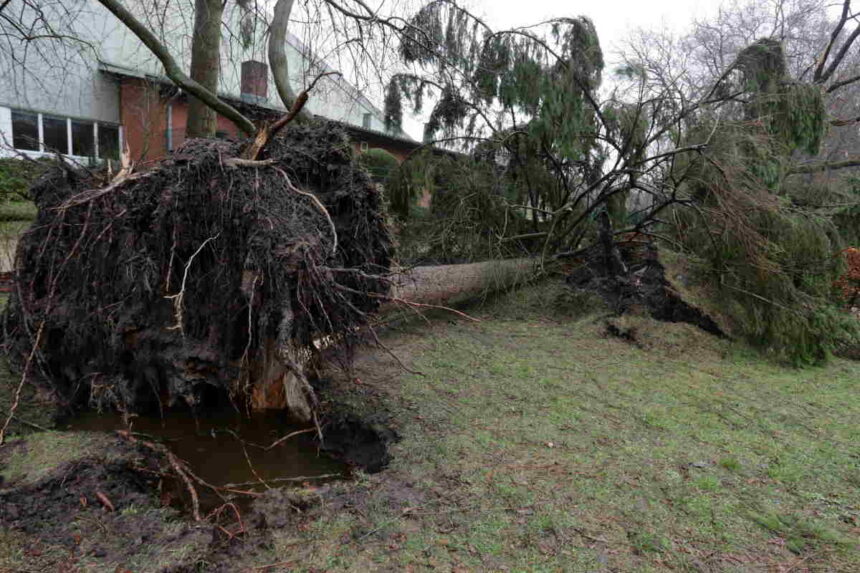A powerful storm swept across the northwest United States on Tuesday evening, knocking out power, downing trees, and causing extensive damage. This powerful low-pressure system so-called “bomb cyclone”-rapidly intensified to bring hurricane-force winds and heavy rain into the region. The hardest-hit areas included Washington, Oregon, and California, where the dangerous conditions continued through the week.
Strong Winds and Heavy Rain Take Their Toll
The intense winds of the bomb cyclone-which occasionally reached over 100-mph-created an awful amount of chaos. Wind gusts across the Oregon coast reached 79 mph, with Washington’s Mount Rainier experiencing gusts as high as 77 mph. The force of this storm was powerful enough to knock down trees and cause widespread damage.
In Seattle, a tree fell onto one car, trapping a person inside briefly-who mercifully was later reported in stable condition. The fierce gusts also knocked down trees onto homes and littered streets, preventing residents from easily traveling around their neighborhoods.
In Lynnwood, Washington, the storm killed a woman when a large tree fell onto a homeless encampment. The female occupant of the encampment succumbed to the falling tree. The Seattle Fire Department and emergency services in the surrounding area warned people to stay indoors if at all possible, seeking shelter on lower floors of buildings and away from windows.
The powerful winds led to a warning by the National Weather Service for those living in impacted regions to take precautions and keep indoors. “Stay safe by avoiding exterior rooms and windows and by using caution when driving,” the weather service urged on social media, further emphasizing the dangers of driving during such extreme conditions.
Power Outages Affect Hundreds of Thousands
The storm brought down power lines across the northwest; power outages were one of the major concerns. Over 600,000 homes across Washington State were reported to be without electricity on Wednesday morning, with fluctuating power losses across many areas due to downed power lines and technical difficulties still ongoing. Both utility providers and weather agencies found it hard to provide up-to-the-minute updates as internet outages made life even more complex.
As with Washington, Oregon and California were affected by power outages: more than 15,000 people lost power in Oregon and close to 19,000 in California. The actual number fluctuated throughout the night, as the storm worsened and further areas came into its orbit. While people dealt with the lack of electricity, emergency response teams were working hard to clear the roads, repair damage, and make communities safe.
In addition to the high winds, the bomb cyclone pushed heavy rain into the region, enhancing flood risks. The Weather Prediction Center has issued flood watches for parts of the northwest, where up to 8 inches of rain is forecast. Flash floods, rockslides, and debris flows become critical threats, particularly in northern California and Oregon, where drivers are being advised to stay off the roads because of the dangerous conditions.

